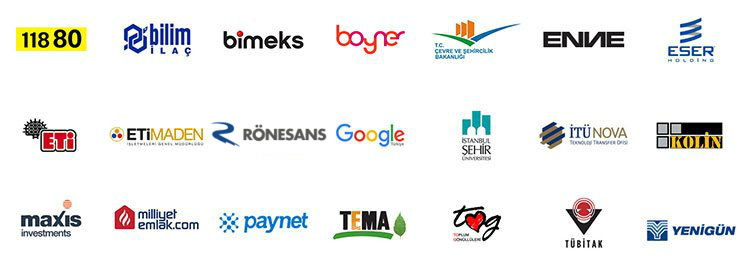
In the dynamic world of procurement, the pressure to deliver value, enhance efficiency, and manage costs effectively is ever-present.
But how can you make a strategic impact when you're buried in daily operations and constantly putting out fires?
The Obstacle to Strategic Value: The Reactive Cycle
Many procurement professionals find themselves caught in a never-ending reactive cycle.
Daily tasks like fulfilling incoming requisitions, managing urgent orders, and solving operational issues consume all available time and energy.
This makes it nearly impossible to see the bigger picture and make proactive, strategic moves.
As pressure mounts from leadership to deliver savings and efficiency, it can be difficult to know where to even begin.
Without clear steps that yield tangible, near-term results, the procurement department cannot realize its full potential.
The Hidden Costs of a Reactive Approach
Being stuck in this reactive cycle isn't just a time management problem; it has much deeper and more costly consequences.
Opportunities are missed.
When there's no time for proactive analysis and strategy, potential cost savings are left on the table, which directly harms the company's bottom line.
Procurement's reputation suffers.
The department begins to be seen as a transactional processing center rather than a strategic business partner.
Team morale declines.
Working under constant pressure on repetitive, low-impact tasks diminishes the motivation and job satisfaction of even the most talented professionals.
Stakeholders become frustrated.
Slow processes and a lack of proactive guidance cause other departments to view the procurement process as a roadblock.
Breaking the Cycle: 3 Actionable Strategies for Immediate Impact
There are ways to break this cycle and create immediate value.
While long-term strategic initiatives are crucial, there are also targeted actions you can take right now to get quick results.
Let's explore the practical approaches that can energize your operations and deliver swift returns.
Strategy 1: Conduct a "Micro-Segment" Spend Analysis for Quick Savings
A full-scale spend analysis is a massive undertaking, but you can achieve rapid insights by focusing on a smaller, manageable segment.
This targeted approach allows for faster data gathering, analysis, and action.
Identify Your Target Micro-Segment
Start by selecting a specific category of spend that might offer immediate opportunities.
- High-frequency, low-value purchases (office supplies, routine MRO items).
- A single, non-critical indirect spend category.
- Spend with a new supplier where initial terms might be ripe for a quick review.
The key is to choose a segment where data is relatively accessible and potential changes won't cause major operational disruptions.
Perform a Rapid Analysis
Once your micro-segment is defined, quickly gather the relevant data for the last 3-6 months.
Look for simple patterns.
- Are there multiple suppliers for identical items?
- Have prices for standard items fluctuated significantly without clear reasons?
- Are there opportunities for volume consolidation, even on a small scale?
A simple spreadsheet analysis can often reveal these initial opportunities without the need for complex business intelligence tools for this specific, focused task.
How do you identify cost-saving opportunities?
Cost-saving opportunities are often uncovered through data analysis.
Look for price arbitrage—different prices being paid to different suppliers for the same item.
Search for the potential for volume discounts by consolidating orders that are unnecessarily split.
You can also find savings by checking for contract compliance and spotting anomalies like duplicate payments or invoicing errors.
Implement and Track Immediate Changes
Based on your findings, implement straightforward changes.
This could involve consolidating orders with a single preferred supplier for the chosen micro-segment.
It might mean a quick renegotiation with a supplier based on newly visible volume or pricing discrepancies.
Track the savings or efficiency gains from this specific action over the next month or two.
Strategy 2: Streamline One High-Impact, Low-Complexity Internal Process
Procurement is often interconnected with numerous internal processes, and even small bottlenecks can cause significant delays and frustration.
Identifying and streamlining one such process can yield immediate improvements in cycle times and stakeholder satisfaction.
Pinpoint a Common Bottleneck
Think about the daily or weekly tasks that consistently seem to take longer than they should or generate the most queries.
Perhaps it's the approval workflow for low-value requisitions.
It could be the way specifications are gathered from internal stakeholders for common purchases.
Or maybe it's the process for urgent purchase requests.
Choose one specific, recurring process that is widely acknowledged as an irritant but isn't so complex that an improvement project would take months.
How can procurement operations be simplified?
The key to simplifying operations is eliminating unnecessary steps.
Review approval workflows; are fewer approvals sufficient for low-value purchases?
Standardize the information-gathering process by creating templates for frequently requested items.
Furthermore, leveraging technology and automation to reduce manual data entry significantly simplifies operations.
Map the "As-Is" and Identify Quick Fixes
Quickly sketch out the current steps involved in this chosen process.
Involve one or two key individuals who regularly use or are affected by this process.
Look for obvious redundancies, unnecessary steps, or points of frequent delay.
- Are too many approvals needed for a low-risk item?
- Is information being manually re-entered into multiple systems?
- Are communication channels unclear, leading to back-and-forth?
Focus on changes that can be implemented with minimal disruption or system reconfiguration.
Communicate and Implement the Refined Process
Once you’ve identified a simple improvement, clearly communicate the updated process to all relevant stakeholders.
Provide a clear rationale for the change, emphasizing the benefits of speed and efficiency.
Monitor the impact of the change.
Strategy 3: Enhance Communication with a Key Internal Stakeholder Group
Effective procurement relies heavily on strong relationships and clear communication with internal stakeholders.
Proactively enhancing communication with just one key department or team can lead to immediate improvements in collaboration, specification clarity, and overall project success.
Identify a Key Stakeholder Group for Focused Engagement
Consider which internal department or group you interact with frequently, or where improved alignment could yield significant benefits.
This might be the engineering team if you source technical components.
It could be the marketing department if you frequently procure creative services or event-related items.
It might be the finance team to ensure smoother P2P alignment.
Choose a group where a small investment in enhanced communication could make a tangible difference quickly.
Why is stakeholder and supplier relationship management important?
Effective relationship management is a cornerstone of procurement because it directly impacts quality, timing, and cost-effectiveness.
Strong supplier relationships lead to better collaboration, innovation, and risk reduction.
Similarly, strong internal stakeholder relationships ensure a better understanding of needs, clearer specifications, and smoother approval processes, which prevents delays and frustration.
Initiate a Focused Dialogue
Schedule a brief, informal meeting or a series of short conversations with representatives from this stakeholder group.
The goal is to better understand their current procurement-related challenges, perceptions, and needs.
Ask open-ended questions.
- "What's working well in our current interactions?"
- "What are the biggest pain points you experience when working with procurement on your requirements?"
- "What information from procurement would be most helpful to you, and in what format?"
Listen actively and aim to identify one or two specific communication improvements you can implement immediately.
Implement Actionable Communication Enhancements
Based on the feedback, implement simple changes.
This could include:
- Establishing a regular, brief check-in meeting (e.g., bi-weekly for 15 minutes).
- Creating a shared document or FAQ for common procurement questions relevant to that group.
- Proactively providing them with updates on key projects or market changes affecting their typical purchases.
- Clarifying points of contact within procurement for different types of requests.
This proactive engagement reinforces procurement's role as a valuable business partner.
Conclusion: Small Changes, Significant Power
Boosting your procurement power doesn't always require monumental shifts in strategy or technology.
By implementing targeted, actionable strategies like a micro-segment spend analysis, streamlining a specific internal process, or enhancing communication with a key stakeholder group, you can achieve immediate and impactful results.
These quick wins not only deliver tangible benefits but also build confidence and create a positive feedback loop, demonstrating the agility and value-driven approach of your procurement function.
Embracing such practical steps can make a noticeable difference in your daily operations and strategic contribution.
The journey to procurement excellence is built on both broad strategies and decisive, impactful actions.
How would these strategies impact your team? Continue the conversation by sharing this post on your professional network and tagging Digita Technologies!







